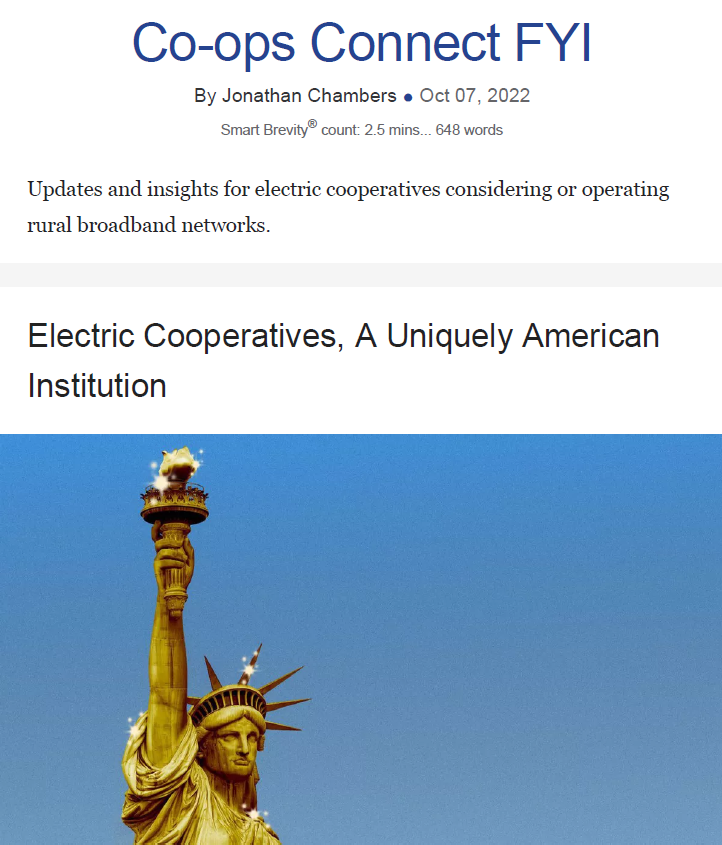Electric Cooperatives, A Uniquely American Institution
October 7, 2022
There are other types of cooperatives in the United States, other cooperatives around the world, and even a number of electric cooperatives in countries such as the Philippines.
But the electric cooperative movement, borne in the depths of the Depression, has uniquely American attributes.
Among those attributes, I count three as the most significant:
1. The American proposition
2. The American covenant
3. The American vision
The American Proposition
“…a new nation, conceived in liberty and dedicated to the proposition that all men are created equal.”
Our country was founded on the principles of liberty, equality, and democracy.
What makes cooperatives fundamentally different from other business structures? The nature of the ownership.
- Cooperatives are owned by members, and being so owned, governed by members following American principles of democracy.
Why it matters:
Member ownership and democratic governance are the most significant reasons that cooperatives have long delivered a better service at a lower price.
The American Covenant
America was built on a covenant, a covenant of “We, the People.”
- The people are all of us together.
- Throughout our history, we have returned again and again to that essential notion that we are all Americans and we are all part of a great social, economic and cultural journey together.
Yes, but:
The covenant of America has bypassed too many, overlooked too many, allowed too many to come up short.
- If we are to overcome what divides us, it will be by a recognition that, despite our differences, we are all in this together.
The bottom line:
Electric cooperatives were built on a covenant, a covenant of “We, the Members.”
- A covenant binds people together and lifts them up.
- Building the electric distribution networks was hard, physical work.
- Just as important as the physical nature of the work, covenant made it possible.
The American Vision
Our nation has always looked to the future and fostered invention. Beginning with Franklin, invention is part of America’s DNA.
- Most major inventions and advancements in technology over the past two hundred years were developed and nurtured here.
- By invention, I don’t mean the big things: cotton gin, light bulb, telephone, auto assembly line, robots, personal computer, theInternet, space exploration.
- I mean invention as culture, as a way of overcoming obstacles and bettering our lives.
Why it matters:
Rural electrification falls squarely in the great American tradition of invention. When investor-owned utilities would not, could not, build electric networks to rural areas, those same rural communities found a way.
The bottom line:
Rural broadband is in the same great tradition. When telephone companies and government agencies claimed that fiber optic networks were too expensive for rural America, electric cooperatives proved otherwise.
For Conexon, too, invention is in our DNA.
The Next American Cooperative
I’ve heard people analogize rural broadband to the rural electrification movement of the 1930s and 1940s.
To us, it isn’t an analogy; it’s a reality.
- The same companies that built electric networks across the nation are building broadband networks.
- After decades of failure by the telephone and cable industries, electric cooperatives are stepping up to solve the digital divide.
Looking to the future:
So, what about rural areas that lack an electric cooperative, or where the electric cooperative has chosen to stick strictly to the electric business?
I believe there is a role for a cooperative in those cases, too, perhaps a broadband cooperative.
- But it cannot be a name only, or a legal structure only.
- Such a cooperative must follow the principles that have worked so well in the electric cooperative movement.
In weeks to come, I’ll describe a path for a broadband cooperative, separate from electric cooperatives.

